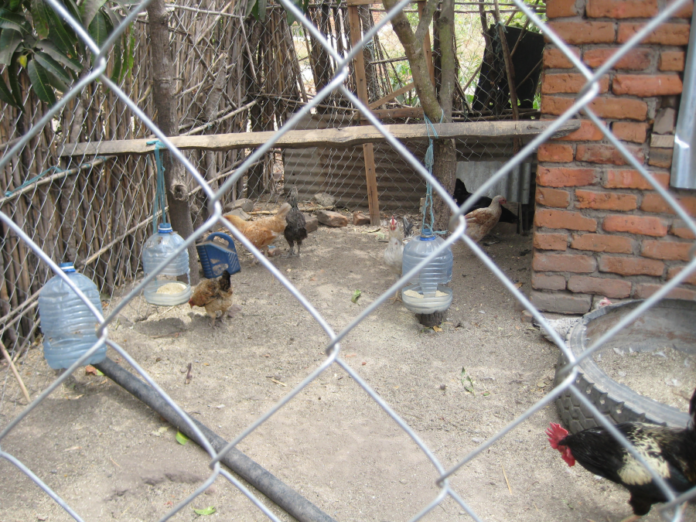Gender-inclusive, agricultural and nutrition extension programs lead to healthier international farming communities.
Nutrition is not the same across all farming communities. Some farming communities encounter mixed nutritional messages, which challenges their health and agricultural development. Extension programs, funded by the United States Agency for International Development, find solutions that match country and culture-specific realities for international farming communities.
“In most countries, like Zambia, women are doing most of the farming work,” said Amanda Crump, a lecturer in the UC Davis Department of Plant Sciences. “However, women have not benefited from previous agricultural extension practices.”
Crump partnered with USAID’s Integrating Gender and Nutrition within Agricultural Extension Services (INGENAES), an initiative that promotes women empowerment in household incomes, to improve agricultural productivity and nutrition outcomes for farming families. INGENAES operated within several USAID Feed the Future countries, such as Honduras, Nepal, Uganda and Zambia.
INGENAES was recently completed in 2018. UC Davis, along with the University of Illinois at Urbana-Champaign, the University of Florida and other partners, collaborated with USAID missions, government officials and farmer organizations in write-shops. All together, they created focused, culturally-sensitive and relevant messages for men and women.
“INGENAES’ predecessor relied on country-level extension programs, missing women’s involvement to improve the way they farmed,” Crump said. “Women are treated differently in each country, we need to adjust our nutrition tools for each experience. In Zambia, we worked with local partners who created a plate game, asking women to put the foods they ate on a plate. It told us a lot of information, we could assess which nutrients they were getting in their regular diet and which nutrients were missing.”
The UC Davis team produced five consistent nutrition messages for Zambian families embedded in keychain rings. In Uganda, calendars worked well to determine which foods were accessible based on the harvest season, along with messages printed on grain sacks describing agricultural food loss.
Changing nutrition habits also involves changing the mindset of farming communities.
“A lot of people were not receptive when you mentioned one gender or the other,” said Nikki Grey Rutamu, the assistant director of the UC Davis Global Affairs Humphrey Fellowship Program and the UC Davis College of Agriculture and Environmental Sciences International Training Programs. “They respond to whole family approaches.”
The UC Davis team reviewed agricultural technologies for gender inclusivity.
“We reviewed the treadle pump— a hand pump lifting water from wells for irrigation — and interviewed women, asking them how they accessed it, financed it and whether it alleviated their workloads,” Grey Rutamu said. “If she did save time, what did she do with that time?”
In Zambia, the post-harvest season brings problems with drying crops. When crops were not dried enough, aflatoxin, a potent carcinogen, was stored inside crops.
“People use the Perdue Improved Crop Storage bags and wicks away the moisture preventing aflatoxin from settling into the crops, but we found it was an expensive technology for some farmers,” Grey Rutamu said.
In poor, rural communities in East African countries, such as Tanzania, chickens serve as a reliable income and nutrition source for women.
“10 to 35 percent of women’s income in these communities is from chicken,” said David Bunn, an assistant adjunct professor in the UC Davis Department of Animal Science. “85 percent of chicken production in these areas is by small scale production.”
The chicken market is easily accessible. A woman can borrow a hen from a neighbor, start a flock of 24 hens in 18 months and therefore, create a constant source of income. Women were then able to use their income on health, education and food for the members of their families.
“Egg, chicken and meat are considered a luxury,” Bunn said. “Women would sell all of their chicken, meat and eggs to build income, buying starches for their families to eat. We found that it would [be] effective to couple nutrition education with the chicken business. In Ghana, we educated women farmers about consuming eggs and the nutrition benefits for their families. We found they will make that shift with family education, saving some of their eggs and meat for their family and improving their nutrition.”
Another extension strategy incorporated chicken production lessons into primary school curriculum. Women attend school at lower rates than men, creating language barriers and preventing access to information. Their children, however, can learn to manage chickens and build chicken coops at school, translating their skills to their mothers, families, neighbors and the chicken businesses.
“We’ve had interviews about inequities in intrahousehold food distribution,” Grey Rutamu said. “The order of who got what may adversely impact members of the family. A woman would feed her husband and children before herself, leaving her with a diet of limited nutrients.”
By empowering women with agricultural and nutritional knowledge, women are more adept at making decisions that shape their families’ well-being and their own, improving the nutrition and economic development of their communities.
Written by: Foxy Robinson — science@theaggie.org




